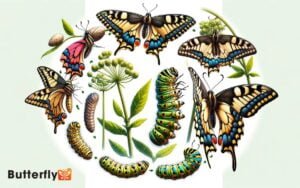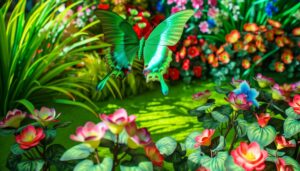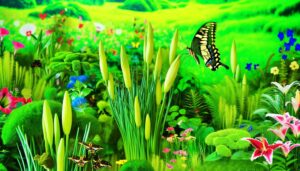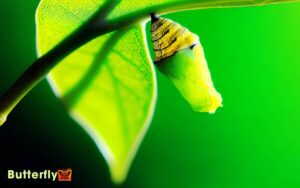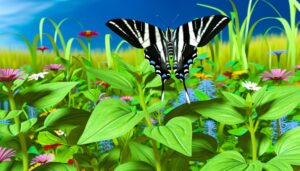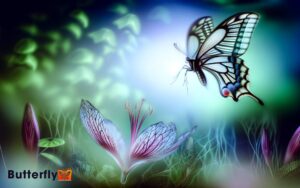7 Expert Tips to Attract Swallowtail Butterflies to Your Garden
To attract Swallowtail butterflies, incorporate native host plants such as parsley, fennel, and dill, which are essential for egg-laying and caterpillar development. Include nectar-rich flowers like Milkweed, Coneflowers, and Joe-Pye Weed to provide energy sources for adult butterflies.
Make certain your garden has diverse native plants and a continuous succession of blooms to offer consistent nectar. Provide shallow water sources and create sheltered spaces with dense shrubs and tall grasses for protection.
Avoid using pesticides, opting for organic pest management methods to safeguard both larvae and adult butterflies. For a thorough understanding, further exploration can be enlightening.
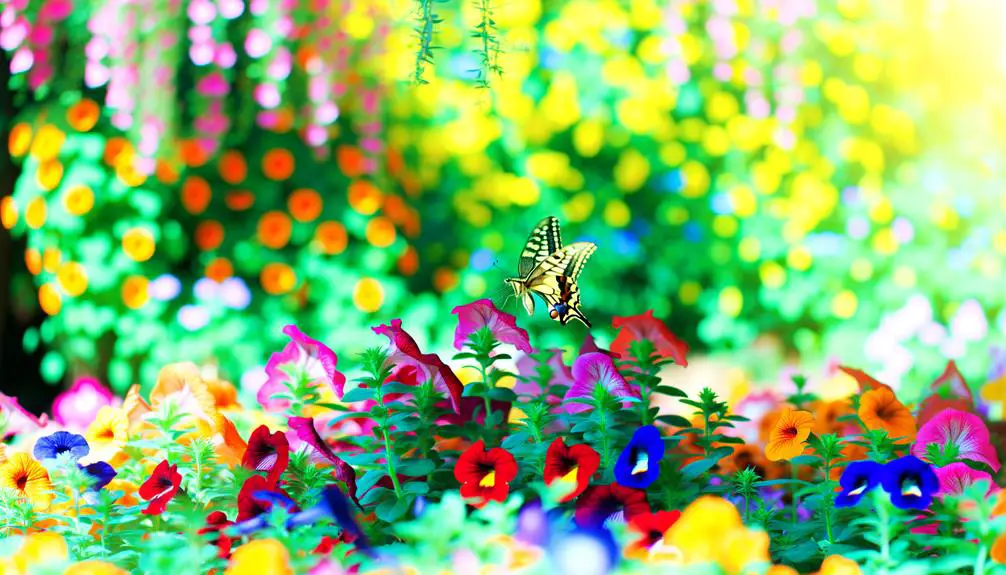
Key Takeaways
- Plant native host plants like parsley, fennel, and dill for caterpillar development.
- Add nectar-rich plants such as Milkweed, Coneflowers, and Joe-Pye Weed.
- Provide shallow water sources in sunny garden areas for hydration.
- Create sheltered spaces with dense shrubs, tall grasses, and small trees.
Identify Swallowtail Varieties
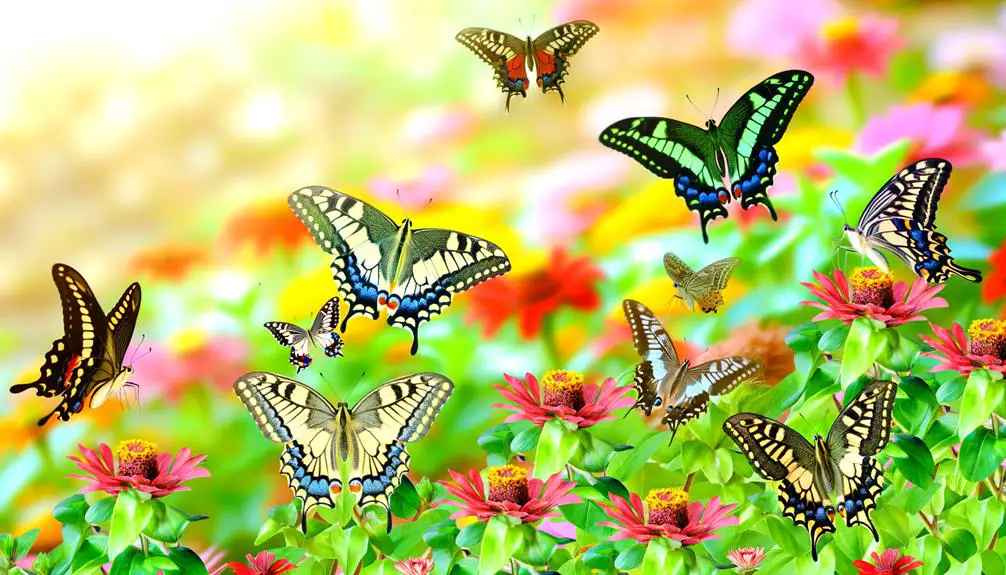
How can one distinguish between the various species of Swallowtail butterflies, given their diverse morphological characteristics and habitat preferences?
Identification requires examining wing patterns, coloration, and structural features such as the presence or absence of tails. For instance, the Eastern Tiger Swallowtail (Papilio glaucus) displays distinct black striping on yellow wings, while the Black Swallowtail (Papilio polyxenes) is mainly black with two rows of yellow spots.
Habitat also offers clues; the Spicebush Swallowtail (Papilio troilus) is often found in wooded areas with spicebush and sassafras, its primary host plants.
Detailed observations of these characteristics, coupled with knowledge of geographic distribution, enable accurate identification. Such precision guarantees the correct species are recognized, fostering a deeper connection with nature's diversity.
Choose Native Plants
To attract swallowtail butterflies, it is vital to incorporate native plants that cater to their specific needs.
Selecting host plants such as parsley and fennel provides essential sites for egg-laying and caterpillar development.
Additionally, integrating a variety of nectar sources and ensuring plant diversity can sustain adult butterflies and enhance the ecological balance of your garden.
Select Host Plants
Selecting appropriate host plants is essential for attracting Swallowtail butterflies, with native species offering the most effective support for their life cycle and ecological needs.
Research indicates that native plants like fennel, parsley, and dill are particularly favored by Swallowtail larvae for oviposition and feeding. These plants provide the essential nutrients required for larval growth and development.
Observations have shown that gardens incorporating these host plants witness a significant increase in Swallowtail activity, leading to successful pupation and adult emergence.
In addition, native plants are adapted to local soil and climate conditions, thereby requiring fewer resources to thrive.
Add Nectar Sources
Incorporating native nectar plants into your garden is essential for providing important energy sources for adult Swallowtail butterflies, consequently supporting their feeding and mating activities.
Native plants are particularly effective as they co-evolved with local butterfly species, enhancing compatibility and accessibility.
Empirical studies emphasize that nectar-rich native species such as Milkweed (Asclepias spp.), Coneflowers (Echinacea spp.), and Joe-Pye Weed (Eutrochium spp.) provide ideal nourishment.
These plants produce high-sucrose nectar, critical for the energetic demands of Swallowtails during migration and reproduction.
Additionally, native plants generally require less maintenance and withstand local climatic conditions better than non-natives, promoting a sustainable gardening practice.
For this reason, selecting native nectar sources is an evidence-based strategy to attract and sustain Swallowtail butterflies.
Ensure Plant Diversity
Enhance your garden's appeal to Swallowtail butterflies by guaranteeing a diverse array of native plants that provide various ecological benefits.
Native plants like milkweed, black-eyed Susan, and coneflower support local ecosystems, offering essential nectar sources and larval host plants for Swallowtail butterflies. Research indicates that native flora fosters higher biodiversity, promoting robust butterfly populations.
Observations show that Swallowtails particularly favor plants such as fennel and dill for laying eggs. By incorporating a variety of native species, gardeners not only attract adult butterflies but also support the entire life cycle of these pollinators.
This plant diversity guarantees a resilient habitat, providing Swallowtails with the necessary resources to thrive, thereby fostering a self-sustaining and vibrant garden ecosystem.
Plant Nectar-Rich Flowers
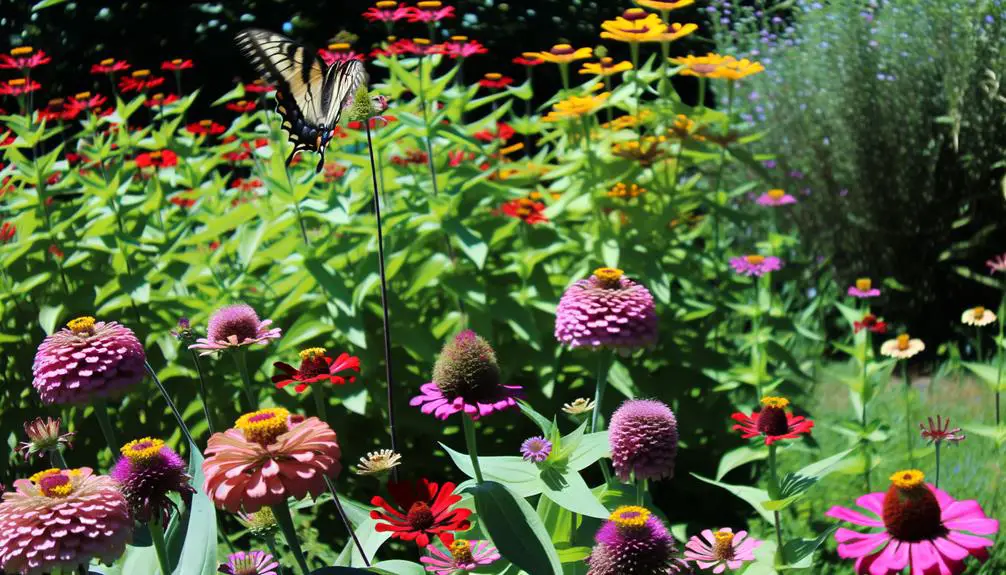
To attract swallowtail butterflies, gardeners should prioritize planting nectar-rich flowers such as milkweed, coneflowers, and lantanas, which provide essential nutrients for these pollinators.
These flowers offer high nectar yields, attracting butterflies and supporting their energy needs. Research indicates that diverse floral resources enhance butterfly visitation rates and improve pollinator health.
Consider including the following nectar-rich plants in your garden:
- Milkweed (Asclepias spp.): A primary nectar source and essential for many butterfly species.
- Coneflowers (Echinacea spp.): Known for their robust nectar production and prolonged blooming periods.
- Lantanas (Lantana spp.): Highly attractive to butterflies due to their vibrant colors and abundant nectar.
Implementing these plants can substantially increase swallowtail butterfly presence in your garden.
Provide Host Plants
An essential strategy for attracting swallowtail butterflies involves providing host plants like parsley, fennel, and dill, which serve as critical larval food sources. These plants not only support the caterpillar stage but also encourage female butterflies to lay eggs in your garden. Research indicates that swallowtails are particularly attracted to the following host plants:
| Plant | Benefits |
|---|---|
| Parsley | High nutrient content |
| Fennel | Strong aromatic properties |
| Dill | Rich in essential oils |
| Rue | Deters predators naturally |
Offer Fresh Water
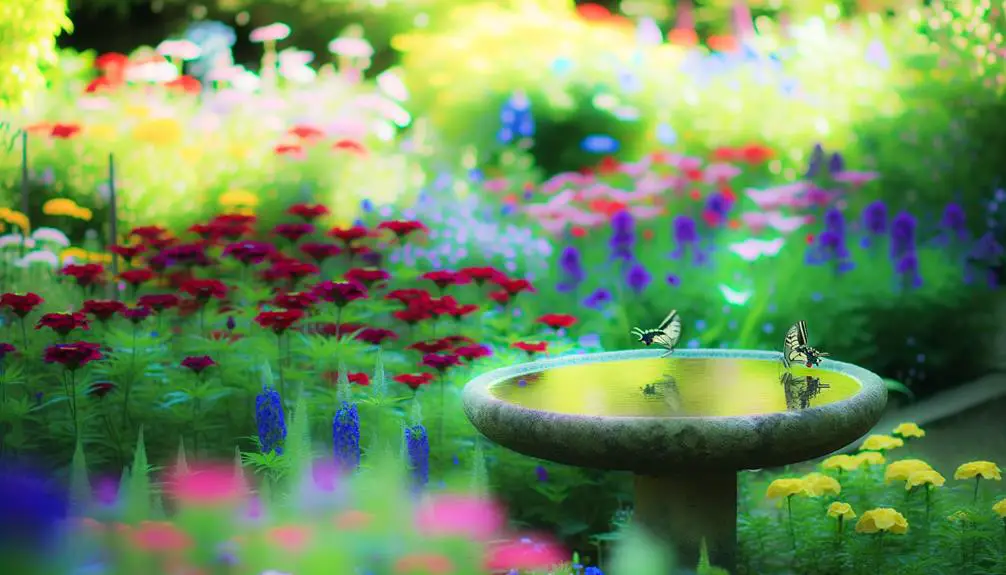
Providing fresh water is essential for attracting swallowtail butterflies, as they require shallow water sources for hydration and nutrient intake.
Consistent water supply guarantees that these butterflies have a reliable habitat, supporting their life cycle and activities.
Observations indicate that shallow, regularly replenished water sources notably increase the presence of swallowtails in a given area.
Shallow Water Sources
Shallow water sources, such as birdbaths or shallow dishes, are vital for attracting Swallowtail butterflies, as they provide necessary hydration and a place for nutrient intake. These sources should be positioned strategically in your garden to optimize butterfly visitation.
Detailed observations suggest that Swallowtails prefer:
- Water depth: Shallow, no more than half an inch, to prevent drowning.
- Surface area: Wide, to allow multiple butterflies to drink simultaneously.
- Location: Sunny spots, as butterflies are more active in warm, well-lit areas.
Implementing these water sources meticulously can greatly enhance the presence of Swallowtails in your garden, offering them both sustenance and a safe environment.
Consistent Water Supply
Maintaining a consistent water supply by offering fresh water is fundamental to ensuring Swallowtail butterflies remain hydrated and healthy in your garden.
Observational studies indicate that butterflies are attracted to shallow, stagnant water sources, which offer essential hydration and necessary nutrients.
Utilize shallow dishes with fresh water, replenishing them daily to prevent stagnation and mosquito breeding. Incorporate natural elements like stones or sand, allowing butterflies to perch comfortably while drinking.
Research confirms that providing consistent, clean water sources can greatly increase butterfly presence and activity.
Consequently, this practice not only supports the well-being of Swallowtails but also enhances the ecological balance and aesthetic appeal of your garden, offering a sanctuary for these vibrant insects to thrive freely.
Create Sheltered Spaces
To effectively attract swallowtail butterflies, it is crucial to design garden areas that offer ample shelter from wind and predators. Creating sheltered spaces guarantees these delicate insects can thrive and engage in essential activities such as nectaring and laying eggs.
Evidence-based strategies recommend incorporating natural and structural elements:
- Plant dense shrubs: Provide a windbreak and habitat.
- Incorporate tall grasses: Offer concealment from predators.
- Utilize garden trellises: Create vertical space and microhabitats.
These elements not only protect butterflies but also foster a biodiverse environment.
Detailed observations confirm that such measures promote higher visitation rates and longer stays by swallowtail butterflies, thereby enhancing the ecological vibrancy of your garden.
Avoid Pesticides
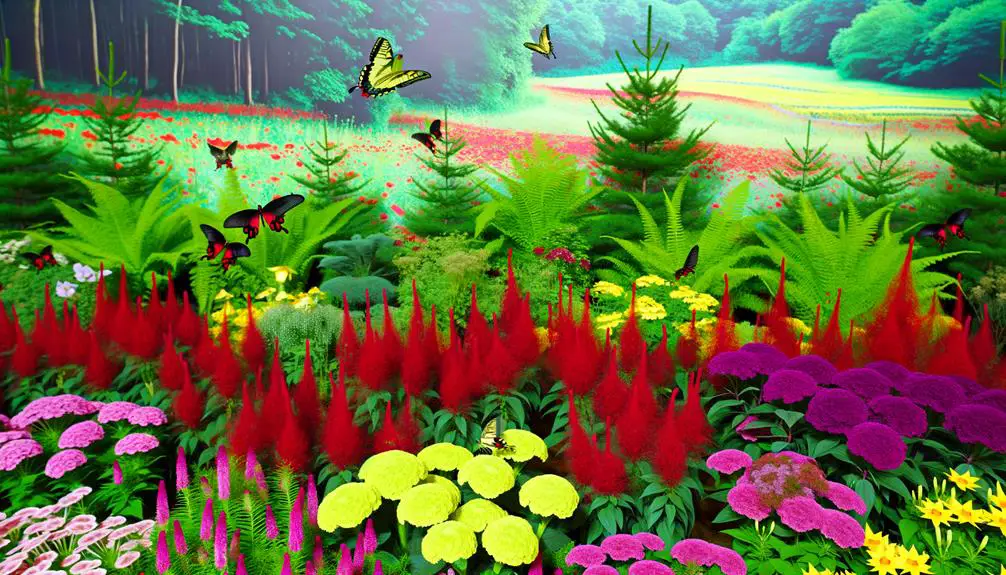
Eliminating the use of pesticides in your garden is essential to creating a safe and hospitable environment for swallowtail butterflies. Pesticides, particularly broad-spectrum insecticides, indiscriminately kill both harmful and beneficial insects.
Research indicates that exposure to these chemicals can greatly reduce butterfly populations by affecting their larvae. For instance, studies have shown that swallowtail caterpillars exposed to pesticides exhibit higher mortality rates and developmental disruptions.
Instead, consider integrated pest management (IPM) strategies, which focus on biological control, such as introducing natural predators like ladybugs or lacewings. Additionally, employing organic methods like neem oil or insecticidal soaps can target pests without harming butterflies.
Maintain Seasonal Blooms
Guaranteeing a continuous succession of blooms throughout the growing season is essential for providing a consistent nectar source for swallowtail butterflies. Implementing a well-planned garden design with staggered flowering times can achieve this goal.
Varieties of plants that bloom at different times guarantee there is always something in bloom, attracting butterflies throughout their active periods.
Consider incorporating the following plant types:
- Early Spring Blooms: Crocus, hyacinth
- Mid-Summer Blooms: Coneflower, milkweed
- Late Summer Blooms: Joe-Pye weed, goldenrod
Monitor Butterfly Activity
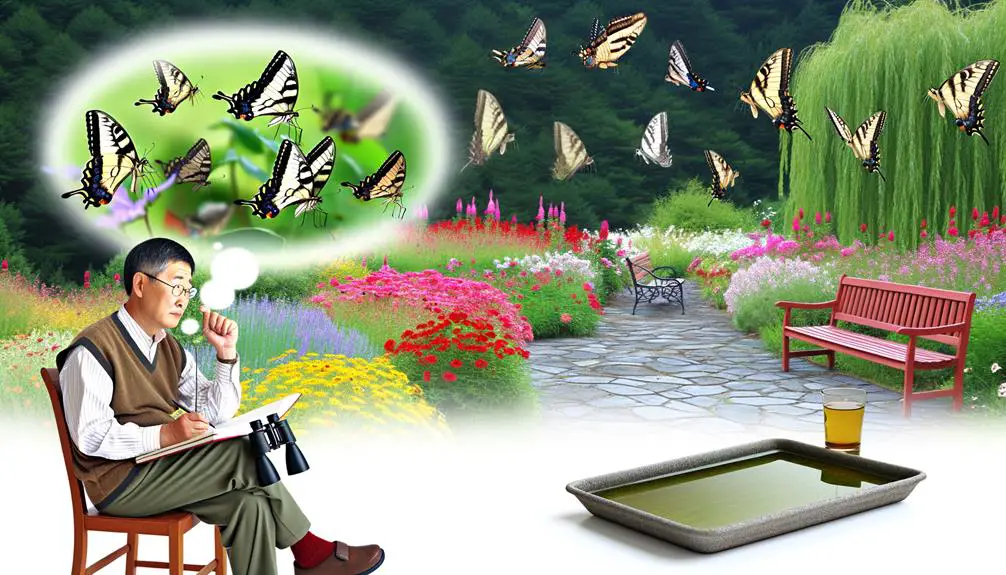
Once a garden is established with a variety of seasonal blooms, systematic monitoring of butterfly activity becomes imperative to assess the effectiveness of the habitat and identify any necessary adjustments.
Regularly document the frequency, species, and behavior of visiting swallowtails. Utilize tools such as butterfly nets and observational logs to gather precise data.
Pay attention to peak activity times, which often correlate with specific blooming phases. Evidence suggests that swallowtails are particularly attracted to nectar-rich flowers like lantanas and milkweed.
Observing larval stages on host plants, such as dill and fennel, can provide insights into reproductive success. Continuous monitoring enables gardeners to make data-driven decisions, ensuring an ideal environment that supports both adult and larval stages of swallowtail butterflies.
Conclusion
The intricate process of attracting swallowtail butterflies demands meticulous planning and execution. This involves carefully selecting host plants like parsley and fennel to support their larvae while ensuring nectar-rich flowers attract adult butterflies. Gardeners must also create a safe habitat free from pesticides to promote healthy growth and reproduction. Just as one hones problem-solving skills by mastering butterfly swallowtail in puzzles, successfully cultivating an environment for these butterflies requires patience, strategy, and keen observation.
By identifying local varieties, selecting native and nectar-rich plants, providing essential host plants, and ensuring access to fresh water and sheltered spaces, an ideal habitat can be established.
The avoidance of pesticides and the maintenance of seasonal blooms further enhance this environment.
Continuous monitoring of butterfly activity will ultimately reveal whether these efforts have succeeded, leaving one poised to witness the enchanting spectacle of swallowtail butterflies gracing the garden.

